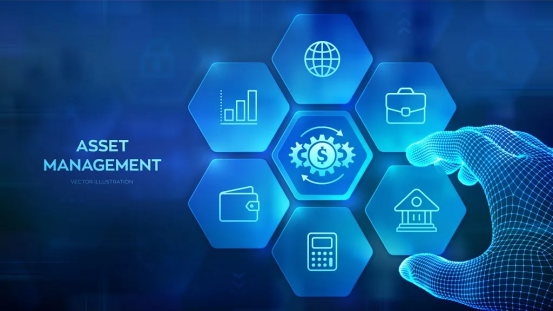Software Asset Management: Tracking, Tools & Best Practices for Optimization
In today’s digital-first workplace, managing software assets is no longer optional—it’s a vital business process. Software Asset Management (SAM) involves systematically monitoring, controlling, and optimizing all applications across an organization. This guide breaks down the essentials of SAM systems, highlights leading tools, and shares strategies for maximizing efficiency and compliance.
In today’s digital-first workplace, managing software assets is no longer optional—it’s a vital business process. Software Asset Management (SAM) involves systematically monitoring, controlling, and optimizing all applications across an organization. This guide breaks down the essentials of SAM systems, highlights leading tools, and shares strategies for maximizing efficiency and compliance.

What Is a Software Asset Management System?
A Software Asset Management (SAM) system helps organizations stay compliant with licensing rules while reducing risks tied to software audits or intellectual property issues. With constant updates and rapid technological change, proper management ensures companies keep pace, cut unnecessary costs, and make better decisions about renewals and cancellations. Ultimately, a strong SAM strategy empowers businesses to get the most out of their software investments and focus on growth.
Why Effective SAM Is Essential
Software licenses are often expensive, complex, and bound by detailed terms of use. Mismanagement can result in penalties, lawsuits, or reputational harm. By tracking usage accurately, companies can avoid these issues, identify underutilized licenses, and negotiate better deals with vendors.
Good software oversight also strengthens cybersecurity by ensuring all applications are patched and up to date—minimizing vulnerabilities that hackers could exploit.
Key Benefits of SAM include:
Compliance: Protects against legal or financial risks from licensing violations.
Cost Savings: Eliminates redundant licenses and reduces waste.
Security: Keeps applications updated to close potential security gaps.
Optimization: Provides visibility into actual usage, aligning tools with business needs.
Types of Software Asset Management Systems
On-Premises Solutions
Installed on local servers and managed internally.
Offer maximum control but require high upfront investment and ongoing IT resources.
Best for large organizations with strict security requirements.
Cloud-Based Systems
Hosted by third-party providers and accessible anywhere.
Typically subscription-based, with lower upfront costs and greater flexibility.
Well-suited for companies needing scalability without heavy infrastructure.
Hybrid Models
Blend both on-premises and cloud options.
Store sensitive data locally while using cloud services for less critical operations.
Provide a balanced approach for organizations with mixed needs.
Feature | On-Premises | Cloud-Based |
Installation | Local servers | Vendor-hosted |
Accessibility | Limited to site | Remote access |
Maintenance | In-house IT | Vendor-managed |
Cost | High upfront | Subscription-based |
Source: TechResearch 2023
Popular Software Asset Management Tools
Microsoft SCCM (System Center Configuration Manager): Best for Windows-heavy enterprises with full Microsoft integration.
Spiceworks: A free, SMB-friendly solution with inventory tracking, help desk features, and reporting.
SolarWinds Service Desk: A cloud option with strong reporting and customizable dashboards.
ManageEngine AssetExplorer: Robust lifecycle tracking, compliance tools, and full visibility over assets.
Why choose professional tools?
Automated tracking reduces errors and saves admin time.
Centralized records make compliance audits easier.
Clear usage insights drive smarter licensing decisions.
Integrates with other IT systems for unified asset management.
Implementing a SAM System: Step-by-Step
- Assessment: Audit current software use and identify gaps or unused licenses.
- Selection: Pick a system that works with your existing infrastructure and future needs.
- Deployment: Install, configure, and test before full rollout.
- Training: Ensure staff know how to use the system effectively.
- Monitoring: Continuously track usage and refine policies.
Best Practices:
Run regular audits for accuracy.
Establish clear acquisition and usage guidelines.
Involve multiple departments to improve adoption.
Stay updated on new tech that could enhance asset management.
Challenges in Software Asset Management
Common Issues:
Data Inaccuracy: Outdated or manual records create compliance risks.
Integration Hurdles: Compatibility issues with existing IT setups.
Resistance to Change: Staff may avoid using new tools without proper onboarding.
Solutions:
Leverage automation to reduce manual errors.
Partner closely with IT teams during rollout.
Encourage adoption with training, recognition, and clear communication.
Using Excel as a Basic SAM Tool
For startups or smaller teams, Excel can serve as an entry-level solution:
Create columns for license type, purchase dates, and renewals.
Update whenever new software is added or removed.
Use formulas to highlight upcoming renewals.
While practical in small-scale environments, Excel lacks the automation and scalability that larger organizations require.
Future Trends in Software Asset Management
Predictive Analytics: AI-driven forecasting to optimize license purchasing.
IoT Integration: Real-time software monitoring across devices.
Blockchain Tracking: Transparent, secure license and transaction verification.
Q&A
Q1: What should I consider when selecting a SAM system?
A1: Budget, control, scalability, and accessibility should guide your decision.
Q2: Is Excel enough for software management?
A2: It works for small setups, but bigger organizations need automated systems.
Q3: How often should license audits happen?
A3: Twice yearly is a good benchmark.
Q4: Are there free tools for small businesses?
A4: Yes—Spiceworks is a reliable free option for SMBs.
Q5: Do I need certifications to manage SAM?
A5: Not required, but ITIL or SAM training can strengthen expertise.
✅ With a solid Software Asset Management strategy, companies can cut costs, reduce compliance risks, and optimize their technology investments—all while ensuring smoother day-to-day operations.

